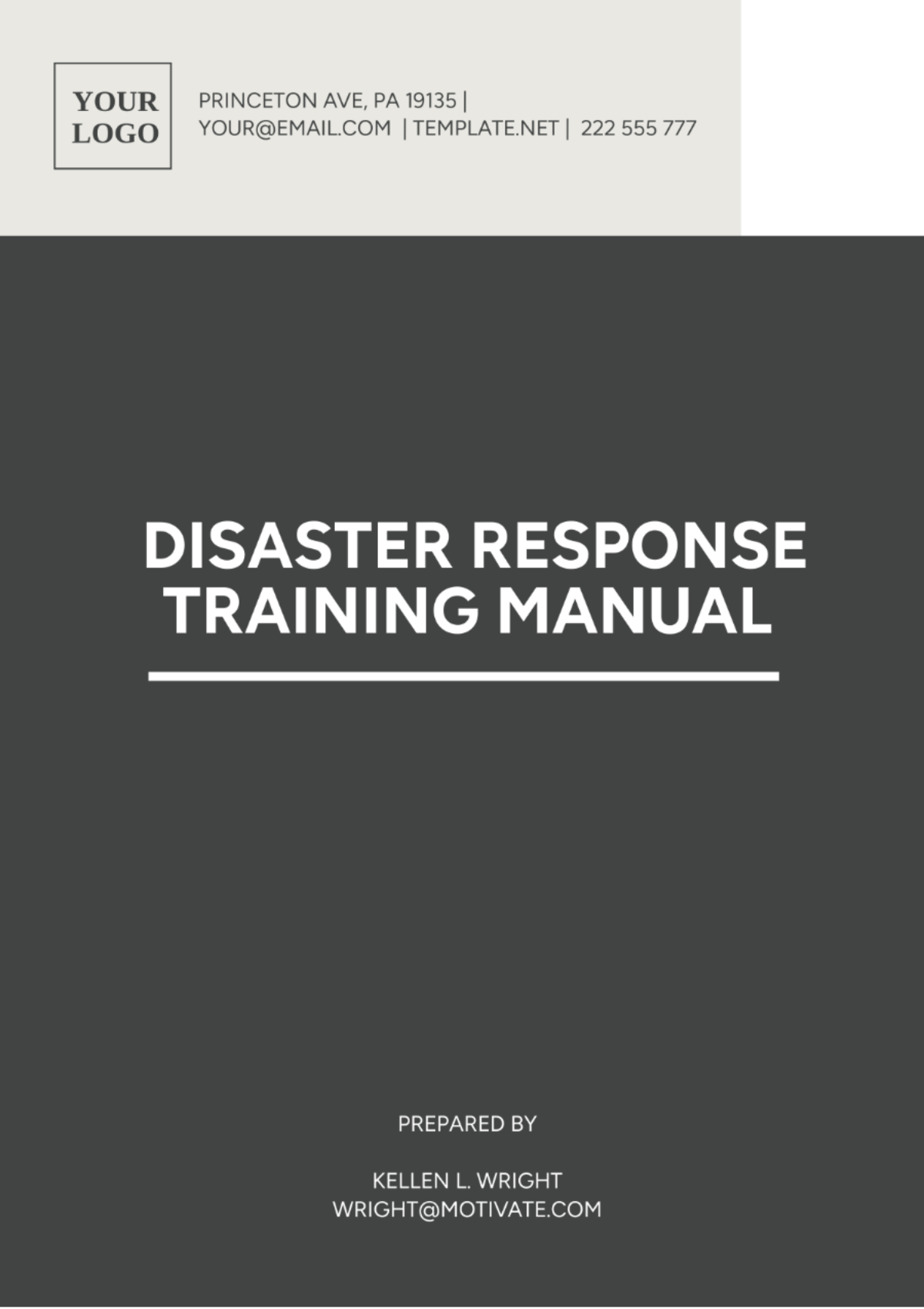DISASTER RESPONSE TRAINING MANUAL
Name: | [YOUR NAME] |
Company: | [YOUR COMPANY NAME] |
Department: | [YOUR DEPARTMENT] |
Date: | [DATE] |
I. Introduction
This manual is a comprehensive guide for employees at [YOUR COMPANY NAME] on how to respond to disasters or emergencies in the workplace. It outlines protocols, measures, and strategies for the preservation of life, minimization of injury, loss of property, and ensures the continuity of operations.
Due to the unpredictable nature of disasters, it is vital for all staff members to be familiarized and regularly trained on these procedures. The success of disaster response largely depends on how well-versed all members of [YOUR COMPANY NAME] are with the guidelines in this manual.
II. Disaster Preparation
Staff Safety: All employees must know their designated secure areas.
Evacuation Plan: Know and understand the specific evacuation plan for your department.
Emergency Kits: The location and contents of [YOUR COMPANY NAME] emergency kits.
Proper disaster preparation can be instrumental in preventing loss and injury during disasters. It involves planning, equipping, and practicing for a potential disaster. This section highlights the various preparation measures undertaken at [YOUR COMPANY NAME] as well as the role of individual employees in disaster preparation.
The different preparation strategies across departments ensure everyone at [YOUR COMPANY NAME] knows their specific roles and responsibilities during an emergency. Understanding these procedures can help reduce panic, enhance efficiency, and ensure safety during disaster.
III. Disaster Response
The disaster response plan outlines the immediate actions that [YOUR COMPANY NAME] and its employees should take once a disaster strikes. It lists specific responsibilities and roles assigned to different departments or individuals, including communication lines and first-aid procedures.
The plan also provides detailed procedures for various disaster types. These guidelines are meant to mitigate the consequences of a disaster, ensuring continuity of operations and safety of all staff within the premises of [YOUR COMPANY NAME].
Inquiries: | [YOUR COMPANY EMAIL] |
Contact Number: | [YOUR COMPANY NUMBER] |
IV. Communication Protocols
1. Internal Communication
Chain of Command: Establish clear lines of communication within the organization's hierarchy to ensure efficient dissemination of information during emergencies.
Communication Tools: Utilize various communication tools such as radios, mobile phones, and messaging apps to maintain contact and coordinate response efforts.
2. External Communication
Stakeholder Communication: Develop protocols for communicating with external stakeholders, including government agencies, media outlets, and the public.
Media Relations: Designate spokespersons and establish procedures for interacting with the media to provide accurate and timely information.
V. Equipment and Resources
1. Emergency Supplies
Basic Supplies: Stockpile essential items such as food, water, medical supplies, and shelter materials to sustain personnel during emergencies.
Specialized Equipment: Ensure availability of specialized equipment such as generators, communication devices, and personal protective gear for response activities.
2. Resource Management
Inventory Management: Implement systems for tracking and managing inventory levels of equipment and supplies to prevent shortages during emergencies.
Resource Allocation: Develop procedures for allocating resources based on priority needs and available capacity.
VI. Post-Disaster Recovery
1. Damage Assessment
Assessment Teams: Deploy teams to assess the extent of damage to infrastructure, facilities, and community assets.
Data Collection: Collect and analyze data to prioritize recovery efforts and allocate resources effectively.
2. Community Support
Community Engagement: Engage with local communities to assess needs, provide assistance, and support recovery efforts.
Long-Term Planning: Develop long-term recovery plans in collaboration with stakeholders to rebuild infrastructure and restore community services.
VII. Conclusion
In conclusion, the Disaster Response Training Manual Template serves as a comprehensive guide for [Your Company Name]'s personnel to effectively prepare for and respond to emergencies. By following the protocols and guidelines outlined in this manual, teams can mitigate risks, ensure the safety of personnel and communities, and contribute to overall disaster resilience. Continued training, communication, and resource management are essential for maintaining readiness and continually improving response capabilities. Together, we can build a safer and more resilient future.
Manual Templates @ Template.net






























